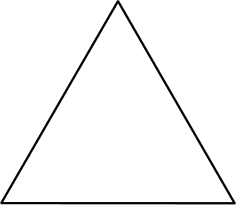21 DEC 2025 by ideonexus
 How Dungeon Masters Handle Race
How Dungeon Masters Handle Race
A thread asking dungeon-masters how “fantasy racism” – the antipathy of dwarves and orcs for example – affects the design and play of campaigns received a range of answers. One poster said “I have a pretty accepting world. I’m a bit more flexible with alignments than the books suggest … there aren’t really any major conflicts on a purely racial basis.”109 Players can change the alignment of individual characters or entire races so that some of the in-world justifications for...Folksonomies: fantasy critical theory
Folksonomies: fantasy critical theory
21 DEC 2025 by ideonexus
 Medieval Thought and "Monstrous Races"
Medieval Thought and "Monstrous Races"
Jeffrey Jerome Cohen argues that: “any kind of alterity can be inscribed across (constructed through) the monstrous body, but for the most part monstrous difference tends to be cultural, political, racial, economic, sexual.”3 Fear of racial difference has been embodied through monsters for centuries, and the idea of “monstrous races” stretches back to the Classical Era. Medieval thought “created strong links between physical and non-physical characteristics among different human gro...Folksonomies: fantasy critical theory
Folksonomies: fantasy critical theory
21 DEC 2025 by ideonexus
 Fantasy Authors Use Existing Cultures for Easy Consistency
Fantasy Authors Use Existing Cultures for Easy Consistency
Inconsistencies in any fictional world can be jarring to audiences and detract from the narrative; “lacking consistency, a world may begin to appear sloppily constructed, or even random and disconnected.”58 Since Secondary Worlds are increasingly likely to be inconsistent as they grow in size and scope, analogies to the real world are particularly useful to Fantasy authors because they provide a template in which not every detail needs to be either imagined or explained to the audience. G...Folksonomies: fantasy critical theory
Folksonomies: fantasy critical theory
21 DEC 2025 by ideonexus
 How Video Games Enforce Racial Restrictions
How Video Games Enforce Racial Restrictions
When the player selects one of the four “Culture” options, an explanatory text box pops up to provide information about it. That information links directly to race, for example: “the Khitani are slender with sharp features and parchment-yellow skin,” and “Cimmerians are a northern race of barbarians, fair skinned and dark haired.” Somatic markers are specified in the text and reinforced by the image of the character displayed in the centre of the screen. The text boxes also detail...Folksonomies: fantasy critical theory
Folksonomies: fantasy critical theory
21 DEC 2025 by ideonexus
 Race in Dungeons and Dragons
Race in Dungeons and Dragons
The impact of Dungeons and Dragons (D&D) and its many transmedia products, while fairly infrequently discussed by historians of fiction in Fantasy, ought not to go unremarked. Even if the trickle-down influence of the game is not considered, its most popular realms were shared worlds in which large numbers of novels, written by multiple authors, were set. Hundreds of novels have been written for each of the Forgotten Realms and Dragonlance settings, for example.15 In the early editions of...Folksonomies: fantasy critical theory
Folksonomies: fantasy critical theory
21 DEC 2025 by ideonexus
 Conan as White Savior
Conan as White Savior
Conan is a White American hero: self-sufficient and independent, strong, honest, and moral, abiding by his own code of honour. His “dual identity of being a savage, but being white,”72 makes him naturally suited to lead the softer, more decadent and corrupted peoples of the south; he becomes, among other things, king of the southern, medievalist realm of Aquilonia. Pulp adventure stories, a genre in which Howard wrote and of which his Conan stories can be considered a fantasy sub-set, wer...Folksonomies: fantasy critical theory
Folksonomies: fantasy critical theory
21 DEC 2025 by ideonexus
 Polygenesis in Fantasy
Polygenesis in Fantasy
Tolkien’s explanations of the differences between Good and Evil humanity – that the former descended from those who had greatest contactand affinity with the Elves in ancient times – does not obviously relate to pseudo-scientific explanations of racial difference; it smacks more of religious constructs of a “chosen people.” Turning from Tolkien’s delineation of human groups to his other species, however, reveals the influence of theories of polygenesis, according to which differen...Folksonomies: fantasy critical theory
Folksonomies: fantasy critical theory
21 DEC 2025 by ideonexus
 The influence of philological Anglo-Saxonism on Tolkien
The influence of philological Anglo-Saxonism on Tolkien
The influence of philological Anglo-Saxonism on Tolkien is clearly visible in his depiction of the Riders of Rohan who “resemble the ancient English down to minute detail.”42 Tolkien had access to the culture of the Anglo-Saxons through his professional work, and drew on their literature extensively. Yet that access was not direct, a jump from the twentieth century to the first millennium, rather, his medievalism was coloured by that of earlier philologists who conceived of them in racial...Folksonomies: fantasy critical theory
Folksonomies: fantasy critical theory
21 DEC 2025 by ideonexus
 Racial Theory, Science, and Fantasy
Racial Theory, Science, and Fantasy
Modern concepts of race were formulated as a “widely shared theory of biologically determined, physical, intellectual and moral differences between human groups.”35 Hannah Augstein identifies three key elements in nineteenth century race-thinking: that humanity can be divided into races “whose characteristics are fixed and defy the modifying influences of external circumstances;” that these racial groupings have different “intellectual and moral capacities;” and “that mental end...Folksonomies: fantasy critical theory
Folksonomies: fantasy critical theory
21 DEC 2025 by ideonexus
 Fantasy-as-Mode VS Fantasy-as-Formula
Fantasy-as-Mode VS Fantasy-as-Formula
Scholarly engagements with the Fantasy genre tend to come largely from literary perspectives and to focus on genre as a body of texts, usually written. Definitions, as a result, are generally concerned with how to delineate its boundaries – which texts are in and which are out? Brian Attebery’s delineation of “fantasy-as-mode” and “fantasy-as-formula” from the Fantasy genre continues to be one of the most influential and useful approaches to that project. The “fantastic mode” ...Folksonomies: fantasy critical theory
Folksonomies: fantasy critical theory




